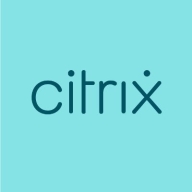

Citrix XenServer and VMware vSphere Foundation compete in the virtualization platform category. Citrix XenServer seems to have an advantage due to its cost-effective offerings and integration features, while VMware is praised for its reliability and comprehensive feature set.
Features: Citrix XenServer offers live migration, integration with Active Directory, and a robust management console for Windows. It also supports open-source development which enhances its functionality. VMware vSphere Foundation provides high availability, robust scalability, and comprehensive management tools for efficient virtualization.
Room for Improvement: Citrix XenServer lacks adequate Linux support, high-availability options in the free version, and has limited management tool functionality outside Windows environments. VMware faces pricing issues, with additional costs post-Broadcom acquisition causing concern. Both could improve third-party tool integration and offer better backup solutions.
Ease of Deployment and Customer Service: XenServer is noted for easy deployment in on-premises environments, though technical support varies by region. VMware vSphere Foundation benefits from a well-established support network but has seen efficiency decreases post-Broadcom merger, affecting customer service.
Pricing and ROI: Citrix XenServer is cost-effective with free and competitively priced paid features, making it attractive to cost-conscious users. However, scaling can increase costs with additional features. VMware vSphere Foundation, while having high initial and ongoing licensing fees, provides robust performance and stability, offering substantial ROI.
My clients generally maintain their Citrix infrastructure without shifting, suggesting stability and reliable operation as Citrix XenServer is fully established.
In an environment where the infrastructure has to be up for monitoring and controlling physical infrastructure like water plants, it has absolutely returned on its investment.
There is flexibility and interoperability with multi-mode architectures that accommodate both on-prem and cloud realities.
Server consolidation is one return on investment where we can use one server for multiple workloads.
With valid licenses, we can access hotfixes, service packs, knowledge base, self-help tools, diagnostics, downloads, live chat, and phone support.
They do not provide adequate support for midsize businesses.
There appear to be very few engineers at Citrix who understand the problems.
There is nonstop support available around the world, which allows issues to be resolved continuously without interruption, regardless of whether the problem occurs in the USA, India, or another location.
Now, with Broadcom's management, I would rate it a three out of ten.
Most of the time, VMware operates smoothly without requiring support.
Familiarity with Linux can enhance its performance and usability.
The return on investment is high because we can maximize the use of one server for multiple workloads.
It's straightforward to procure additional licenses, install them on the host and add them to the same cluster.
You can simply add more hosts to your VMware stack seamlessly, scaling up vertically or horizontally.
I haven't had any significant issues with Citrix XenServer installations over the last 10-15 years.
Stability is optimal.
Frequent updates are required due to constant security challenges and attacks.
It is a standard tool and is considered very stable.
Although the product is technically competitive, it is not widely known or used due to poor marketing.
Citrix needs to improve the hypervisor, specifically in security and performance.
We can implement high availability and live migration with pools, along with security and backup to enable role-based access control for safer management.
I highly recommend that continuous support for perpetual licenses be provided.
VMware needs to improve cost efficiency, especially in Pakistan, as customers often seek more affordable solutions.
Recently, VMware shifted its licensing models, and they should streamline it.
It is cheaper compared to its competitors.
Organizations save substantial money because competing solutions, such as VMware, cost double or triple.
The pricing and licensing policy of Citrix XenServer is not transparent and quite confusing.
It's expensive, however, the stability it offers is optimal.
In Brazil, we are increasingly using open-source alternatives like Proxmox due to their lower prices in comparison.
During one project, the price doubled or even tripled before implementation, causing issues with clients.
The most valuable feature is transferring and sharing applications that allow users to move files between devices, including smartphones, tablets, and computers without needing USB cables, internet connections, or data usage.
It provides secure access to applications and resources, which is crucial for us and our clients.
It is user-friendly and easy to deploy, making it an attractive option.
vSphere Foundation is valuable due to its scalability, reliability, and ease of management.
VMware provides the tools needed to move environments between private and public clouds seamlessly.
The virtual stack of vCenter, its distributed resources system, high availability engines, and the ability to move VM workloads from one host to another are outstanding.


Citrix XenServer provides virtualization with high availability and robust security, offering seamless VM migration and centralized management through XenCenter. Its expansive compatibility and integration enhance its appeal, particularly for SMBs.
Citrix XenServer is recognized for its user-friendly virtualization capabilities, facilitating dynamic scalability and efficient resource management. It supports a wide range of operating systems and integrates with Citrix solutions for improved operations. Businesses benefit from its affordability and ease of deployment. Despite its strengths, users seek improvements in third-party tool integration, network and backup management, and storage flexibility. High costs, limited Linux support, system complexity, technical support, and hardware compatibility remain challenges. An updated and intuitive interface is in demand for more seamless operations across platforms.
What are the key features of Citrix XenServer?In diverse industries, Citrix XenServer is leveraged for server and desktop virtualization, cloud automation, and infrastructure management. Many deploy it for virtual desktop infrastructure, application delivery, on-premises data centers, and to support Citrix application delivery like XenApp and XenDesktop. Enterprises migrating from VMware often find Citrix XenServer cost-efficient for these applications, serving as a main computing platform for enterprise applications including ERP systems and SQL Servers.
VMware vSphere Foundation is designed for businesses seeking virtualization management capabilities. It offers essential features to optimize IT operations and improve server utilization, providing a solid infrastructure for managing virtual environments.
VMware vSphere Foundation supports efficient resource management in virtual environments, delivering a robust platform for businesses to streamline their IT processes. It enhances system reliability and offers scalable options for growing business needs. By leveraging virtualization, it reduces hardware dependency while ensuring consistent system performance.
What are the key features of VMware vSphere Foundation?VMware vSphere Foundation is implemented effectively across industries like healthcare, finance, and retail. It supports crucial workloads, allowing these sectors to maintain operational efficiency while handling sensitive data. Its flexibility and robust capabilities make it suitable for diverse operational demands.
We monitor all Server Virtualization Software reviews to prevent fraudulent reviews and keep review quality high. We do not post reviews by company employees or direct competitors. We validate each review for authenticity via cross-reference with LinkedIn, and personal follow-up with the reviewer when necessary.